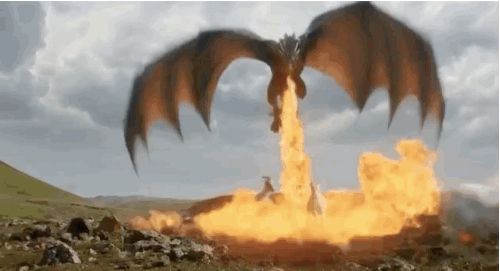
On last nights season finale of Game of Thrones, Daenerys Targaryen faced a problem common for all working moms: Her child got into some trouble while she was gone. Specifically, Drogon, the largest of her three adolescent dragons, barbecued a little girl to death, leaving only scorched bones behind. This was too much, even for Khaleesi; letting your dragons fly around and burn people is very bad for morale. So the Mother of Dragons made a tough but necessary decision: She chained up her other two kids. Rhaegal and Viserion are currently locked in the catacombs, whining mightily about their new constrictive hardware, which raises some important questions: Is that chain going to hold? Are we really operating at Top Levels of Dragon Security right now, with just the one chain per beast? And what is she going to do when she finally catches Drogon? To find out, Vulture decided to consult an expert on  how to chain your dragon. (It was right there. Sorry.)
These days, chaining animals is generally regarded as inhumane treatment, and itÔÇÖs tough to find an expert on that subject, so we found the next best thing: an expert on anchoring and mooring. Dave Bryant, a self-professed ÔÇ£diehard Games of Thrones fanÔÇØ who works for online retailer Anchoring.com, was kind enough to attack this hypothetical problem.
Before the chain discussion, we needed to come up with some hypothetical dragon measurements, since for all of George R.R. MartinÔÇÖs verbosity, Vulture was unable to track down any concrete numbers on dragon size and force. We focused on Drogon, the most troublesome of the dragons, and comparing DrogonÔÇÖs size to DanyÔÇÖs, we estimated that he is 15 feet long and three feet wide, not counting full wingspan. (Reminder: We are measuring Drogon at his current size, not his full-grown size.) Meanwhile, a panel of Game of Thrones experts (translation: a bunch of people who have read the books) independently estimated that a teenage Drogon weighs about 200 pounds; this number was based on his size and on the fact that a dragon would need to be relatively light in order to be capable of flight.

Bryant suggested anchoring Drogon in water, as you would a boat, since friction in water is considerably higher than friction in the air. In other words, water slows things down; a chain or rope on land could be yanked around more easily, and possibly even yanked loose. Since Meereen is on the coast, a water prison seems like a workable solution.
Given our size and weight estimates, Bryant said that Drogon would displace about 470 pounds of water. As for how much force Drogon could exert, Bryant told us the ÔÇ£the worst conditions we normally rate a boat for are hurricane-force winds which are about 117 kilometers per hour. ThatÔÇÖs probably not a far stretch from the pull the dragon would create.ÔÇØ
Using all of this information, Bryant recommended ÔÇ£two 25-pounds anchors, one at the bow and stern (or in this case, head and tail). Of course, these anchors would have to be adequately dug into the ground.ÔÇØ Digging them into the ground is key, since weÔÇÖve already seen Drogon┬ásnatch up a goat like it was a Kleenex. Bryant said that about half of the anchor should be underground, but to be safe, you might want to bury the entire thing; the tougher it is for Drogon to get at the anchor, the better.

Additionally, Bryant recommended two bow shackles┬áÔÇö one at the head, and one at the tail ÔÇö and a chain with links one-quarter-inch in diameter for connecting Drogon to the anchors. Bryant also said that a rope a half-inch in diameter would do the trick, but dragons breath fire and ropes burn, so that option is out. Even then, the chain we were recommended does melt at around 1,500 degrees Celsius (2,732 Fahrenheit), so you might want to muzzle Drogon, too.
If Daenerys uses this system, says Bryant, she should be able to keep Drogon and his siblings well contained, because ÔÇö as is always the case on Game of Thrones ÔÇö every plan works perfectly all the time, and everybodyÔÇÖs judgment is good, and nobody ever dies a cruel, fiery death.

